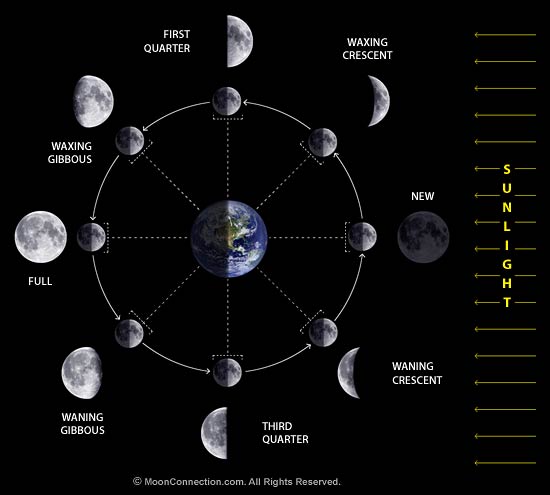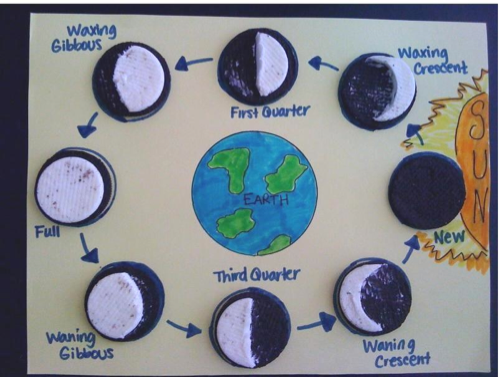
Sunlight is coming from the right side of the screen lighting up half of the moon in each phase. However we can only see half of the moon where only half is being lit up. Depending on the moons position depends on what we see. Try to draw out the moon phases on your own without looking at the picture. Next time you're eating oreos twist the cookie in half scrape off the cream to make different moon phases out of your oreos. This is a great excuse to eat 8 oreos tell your parents it's for science!

